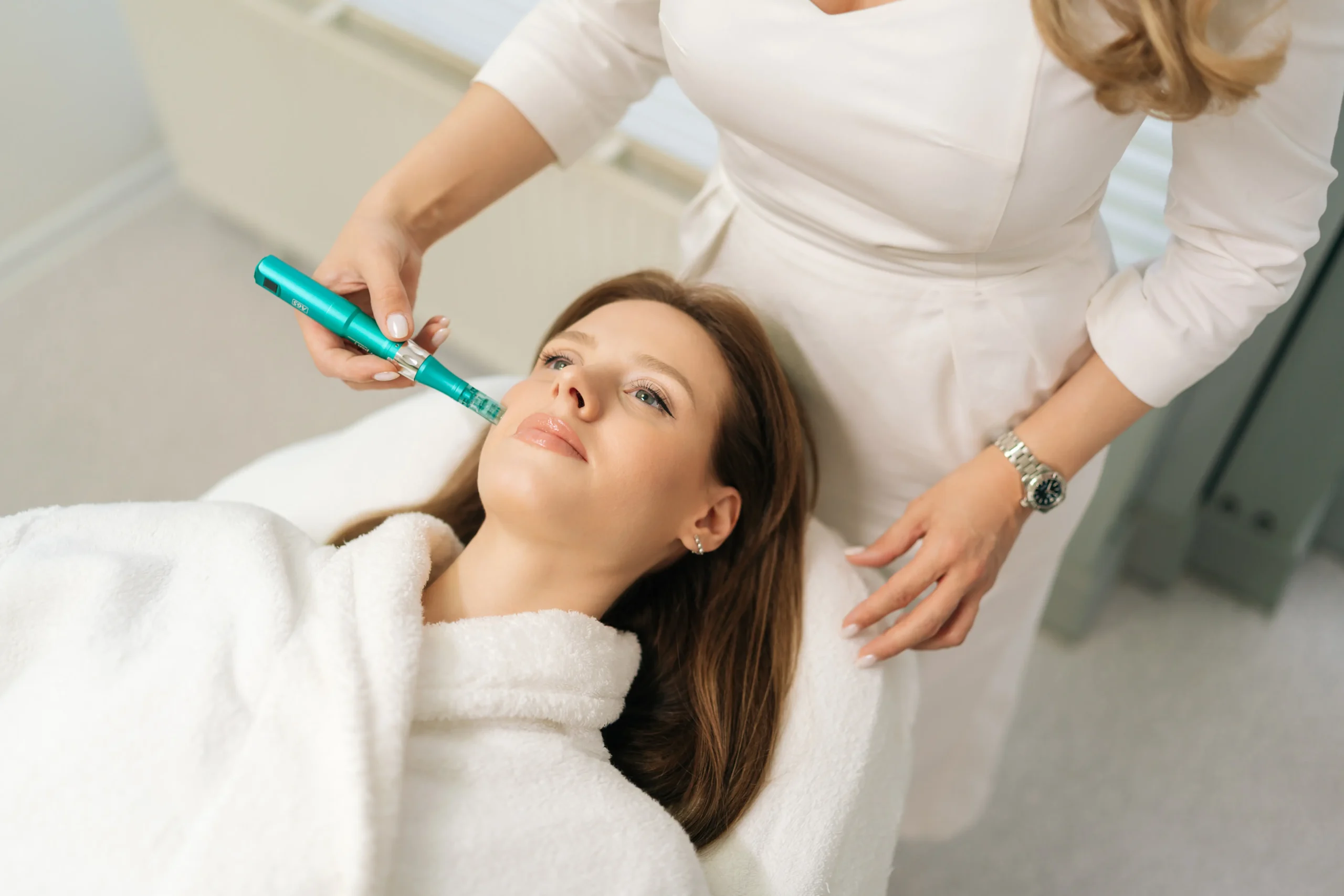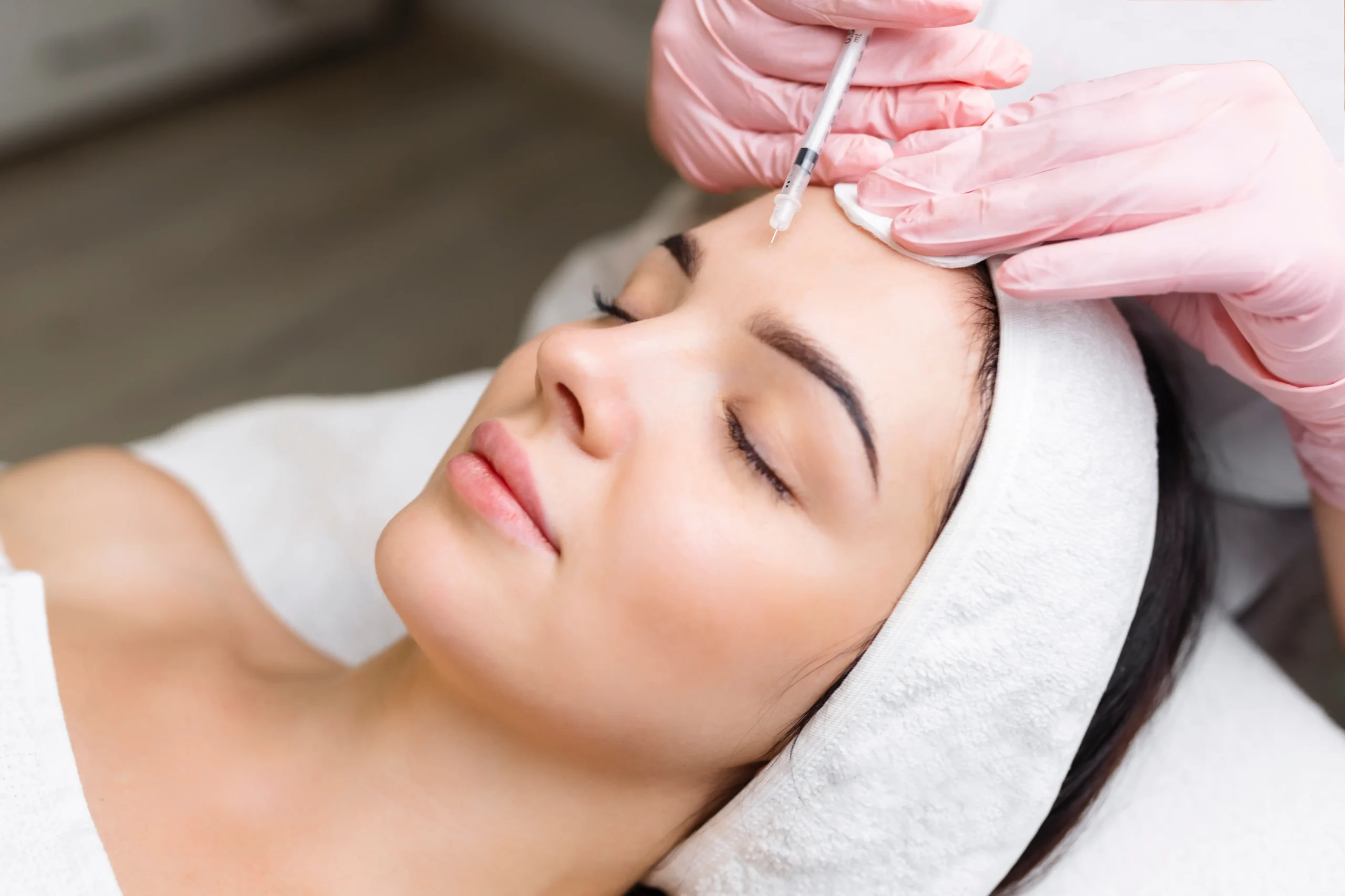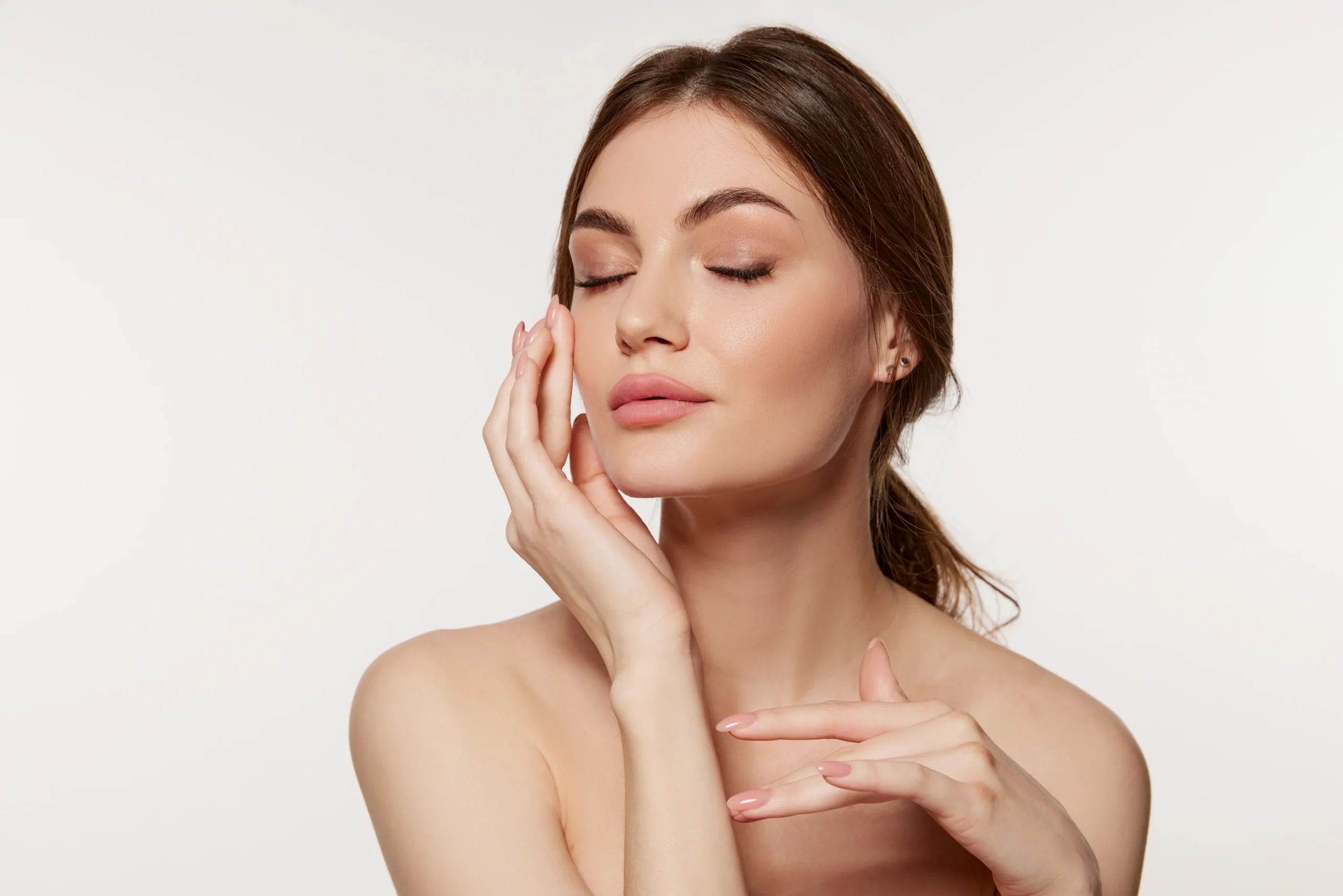Written by Rosalie Orrostieta, MSN, APRN, FNP-C
Medically Reviewed for Accuracy and Safety by Rosalie Orrostieta, MSN, APRN, FNP-C
Last Updated: September 23, 2025
Hello and congratulations! You’ve just taken a wonderful step in your aesthetic journey. Whether you’re glowing after a microneedling session, feeling refreshed from a laser treatment, or admiring the subtle new contours from fillers, you’ve made an investment in yourself. I see the excitement on my clients’ faces every day here at my medical spa in Sarasota, and it’s truly the best part of my job.
But I also know that once you leave the clinic, a new question pops up: “Okay… now what?”
The next 48 hours are, without a doubt, the most critical phase for your healing. Think of it like this: your practitioner has just created a beautiful canvas, and now it’s your turn to be the gentle curator. What you do and more importantly, what you don’t do in this window will directly impact your comfort, safety, and the brilliance of your final results.
So, let’s walk through this together. We’ll start with the universal rules that apply to almost everyone, then dive into the specifics for each treatment.
The Golden Rules: Universal Aftercare for the First 48 Hours
| The Golden Rule | ✅ DO | ❌ DON’T |
| Keep it Simple | Use only provider-approved gentle cleansers and balms. | Experiment with new products or use any active ingredients. |
| Hands Off | Wash hands thoroughly before gently cleansing as instructed. | Touch, pick, scratch, or rub the treated area. |
| Stay Cool | Cleanse with lukewarm water. Use cool compresses. | Take hot showers, use saunas, or perform strenuous exercise. |
| Sun Protection | Stay indoors. Wear a wide-brimmed hat. | Allow any direct sun exposure on the treated skin. |
No matter which treatment you’ve had, your skin is in a vulnerable, delicate state. It’s working hard to heal and regenerate. Our job is to create the perfect, peaceful environment for it to do its best work.
Keep It Simple & Gentle
Your skin barrier, your skin’s protective shield, has been temporarily compromised to stimulate that gorgeous new collagen. This is a good thing! But it also means it’s highly absorbent and sensitive. This is not the time to experiment with that new 10-step skincare routine. For the first 48 hours, simplicity is everything. Use only the products your provider specifically recommends. This usually means a gentle, soap-free cleanser and a simple, hydrating moisturizer or balm. Nothing more.
Hands Off!
I can’t stress this one enough. Your hands, no matter how clean you think they are, carry bacteria. Touching, picking, or scratching the treated area can introduce bacteria into vulnerable skin, leading to potential infection and compromising your results. I once had a client who couldn’t resist picking at a tiny flake of skin after a laser treatment and ended up with a small spot of hyperpigmentation that we then had to work to correct. Please, let your skin heal on its own timeline.
Stay Cool and Avoid Heat
Heat is the enemy of a calm recovery. Activities like intense workouts, saunas, steam rooms, or even just a very hot shower can increase blood flow to the face, which ramps up inflammation, swelling, and redness. I always advise my clients to think of themselves as a delicate flower for two days. Keep everything cool and calm. Cleanse your face with lukewarm or cool water and enjoy a little break from that hot yoga class.
Sun Protection is Non-Negotiable
Freshly treated skin is incredibly susceptible to sun damage. UV exposure on healing skin is a fast track to developing post-inflammatory hyperpigmentation (PIH), which are those stubborn dark spots that can take months to fade. For the first 24 hours, the best defense is avoidance. Wear a wide-brimmed hat, stay indoors, and make friends with the shade. After that, once your provider gives you the green light, a mineral-based sunscreen with Zinc Oxide or Titanium Dioxide (SPF 30+) is your new best friend.
Specific 48-Hour Aftercare Plan: Microneedling
Microneedling is fantastic for texture and tone, creating thousands of tiny micro-injuries to kickstart collagen production. Your job is to protect those healing channels.
What to Expect: The Normal Healing Process
First, let’s normalize the experience. It is completely normal to look and feel like you have a moderate sunburn. Your skin will likely be red, feel tight, and have some mild swelling. Many people also describe a “sandpaper” texture on day two or three as the outermost layer of skin begins its renewal process. This is all part of the magic.
Your 48-Hour Microneedling To-Do List
- First 24 Hours: Less is more. Seriously. I typically advise my patients to only use what we provide them or to simply rinse their face with cool, distilled water if they feel the need. Avoid all skincare products, including cleanser. Let the skin breathe and begin its initial healing cascade.
- 24-48 Hours: You can now introduce a very simple routine.
- Cleanser: Use a gentle, non-foaming cleanser and lukewarm water. Pat dry with a clean towel, no rubbing!
- Hydration: This is a great time to apply a simple hyaluronic acid serum to damp skin. It will pull in moisture and keep your healing skin hydrated and happy.
- Moisturizer: Follow up with a basic, fragrance-free, restorative moisturizer.
- Sunscreen: In the morning of day two, begin applying your mineral-based SPF 30+.
What to Strictly Avoid
During these 48 hours, your skin is like a sponge. Those micro-channels are open doors. A 2018 systematic review in The Journal of Clinical and Aesthetic Dermatology (JCAD) confirmed this, finding that applying unapproved serums right after treatment, even ones normally considered beneficial, like Vitamin C can, in rare cases, cause significant inflammatory reactions. This is why we are so strict about this list:
- Makeup: Especially from dirty brushes or sponges.
- Active Ingredients: No retinoids, Vitamin C, alpha-hydroxy acids (AHAs like glycolic acid), or beta-hydroxy acids (BHAs like salicylic acid). These will be far too irritating.
- Exfoliants: No scrubs or harsh toners.
Specific 48-Hour Aftercare Plan: Laser Treatments
Laser aftercare can vary dramatically depending on the type of laser you had. It’s crucial to know which one you received.
Know Your Laser: Ablative vs. Non-Ablative is Key
Think of it this way: Non-ablative lasers (like Clear + Brilliant or Fraxel) work by heating the tissue underneath the skin’s surface without removing the top layer. Ablative lasers (like CO2 or Erbium) are more intensive and work by removing the outer layers of skin to address more significant concerns. Your aftercare for an ablative laser will be much more involved.
Non-Ablative Laser (e.g., Fraxel, Clear + Brilliant)
- What to Expect: You’ll likely experience that classic sunburn look and feel, along with some swelling. Over the next few days, you may notice your skin taking on a “bronzed” look or developing tiny dark specks that look like coffee grounds. This is completely normal! It’s the laser doing its job of pushing out pigmented cells.
- To-Do List: Cool compresses (wrapped in a soft cloth, never direct ice) can be very soothing. Stick to your gentle cleanser and apply a liberal amount of a bland, thick moisturizer. Products like Aquaphor or CeraVe Healing O ointment are excellent because they create a protective barrier that prevents moisture from escaping. A study in the Journal of the American Academy of Dermatology confirmed that these occlusive ointments significantly speed up skin healing by preventing what we call Transepidermal Water Loss (TEWL).
Ablative Laser (e.g., CO2)
- What to Expect: This is a more intense recovery. Expect significant redness, swelling, and potentially some oozing or crusting. This is not alarming; it is the expected wound-healing response.
- To-Do List: You must follow your doctor’s wound care plan to the letter. This is non-negotiable for preventing infection and ensuring proper healing. This plan often includes gentle cleansing, diluted vinegar soaks to keep the area clean, and the constant application of a thick, prescribed ointment.
What to Strictly Avoid (for both)
The biggest mistake I see people make is picking at the flaking skin. Do not do it! This can lead to scarring and hyperpigmentation. Let the skin shed on its own terms. And, of course, absolutely no active ingredients and no sun exposure.
Specific 48-Hour Aftercare Plan: Dermal Fillers
With fillers, we’re less concerned about the skin’s surface and more focused on what’s happening underneath. The goal is simple: minimize bruising and swelling and let the filler settle perfectly into place.
The Goal: Minimize Bruising & Swelling
According to the American Society of Plastic Surgeons (ASPS), soft tissue fillers are one of the most popular minimally-invasive procedures performed, with temporary swelling and bruising being the most common side effects. So if you see a little bit of this, know that you are in good company and it’s a normal part of the process.
Your 48-Hour Filler To-Do List
- Ice Gently: Apply a cold compress or a small bag of frozen peas wrapped in a cloth to the area intermittently, about 10 minutes on, 10 minutes off. This helps constrict the blood vessels. Just be sure not to apply firm pressure.
- Sleep Elevated: Try sleeping with an extra pillow for the first two nights. Keeping your head propped up helps gravity do its work to reduce fluid accumulation and swelling.
- Stay Hydrated: Drink plenty of water.
- Consider Arnica: Many of my clients swear by Arnica montana, a homeopathic remedy for bruising. While robust clinical evidence is mixed, it’s generally considered safe and may help.
What to Strictly Avoid
- Pressure: No facial massages, no rubbing the area, and try your best not to sleep directly on your face. We want the filler to remain exactly where it was placed.
- Strenuous Exercise: Anything that gets your heart pounding will increase blood flow and can worsen swelling or bruising. A gentle walk is fine, but save the spin class for a few days later.
- Alcohol & Certain Medications: Alcohol thins the blood, which can make bruising worse. Avoid it for 48 hours. Similarly, avoid blood-thinning medications like NSAIDs (Ibuprofen, Aspirin) unless they are medically necessary and you’ve cleared it with your doctor. Tylenol is generally a safer choice for any discomfort.
Red Flags: When to Call Your Doctor IMMEDIATELY
While complications are rare, it is essential to be informed. Your safety is always the number one priority. Please contact your provider immediately if you experience any of the following:
- For All Procedures:
- Signs of Infection: Increasing pain, yellow or green pus, foul odor from the area, or a fever.
- Allergic Reaction: Spreading rash, hives, or intense itching.
- Specific to Microneedling/Laser:
- Severe blistering or crusting that looks worse than what your provider described.
- Pain that is getting worse instead of better and is not helped by Tylenol.
- Specific to Fillers (CRITICAL):
- Signs of Vascular Occlusion: This is a rare but serious complication that requires immediate medical attention. Symptoms include:
- Sudden, severe, or throbbing pain.
- Skin near the area turning pale, white, or developing a blotchy, lace-like pattern (livedo reticularis).
- Any changes in your vision.
- Signs of Vascular Occlusion: This is a rare but serious complication that requires immediate medical attention. Symptoms include:
Frequently Asked Questions (FAQ)
- When can I wear makeup after my procedure?
- For fillers, you can often apply makeup the next day, being very gentle. For microneedling and lasers, you must wait until the skin is no longer open and raw, typically 48-72 hours, but always get the okay from your provider first.
- Can I drink alcohol after my treatment?
- It’s best to wait 48 hours. Alcohol can increase swelling and bruising, especially with fillers, and can also be dehydrating, which is the opposite of what your healing skin needs.
- My skin feels tight and itchy. Is this normal?
- Yes, mild to moderate tightness and itching are very common signs of healing. A gentle, bland moisturizer can help. However, if the itching is severe or accompanied by a rash, call your provider.
- When can I restart my active skincare like retinoids?
- This depends entirely on the procedure and your skin’s healing. It could be anywhere from 5 to 14 days. Never rush it! Re-introduce actives slowly and only after you get clearance from your practitioner.
Conclusion: Patience is Part of the Process
The journey to beautiful results is a partnership between you and your provider. The treatment itself is a powerful step, but your aftercare is what seals the deal. Be patient, be gentle with yourself, and follow the plan.
Here at Rose Medical Aesthetics in Sarasota, our relationship with you doesn’t end when you walk out the door. We consider your aftercare and your final results part of our shared goal. Protecting your investment and ensuring you feel supported every step of the way is at the heart of everything we do.
Enjoy the healing process, and get ready to love your beautiful results.




